Sana’a is the capital of Yemen. Sana’a is one of the oldest continuously inhabited cities in the world, with a history stretching over 2,500 years.
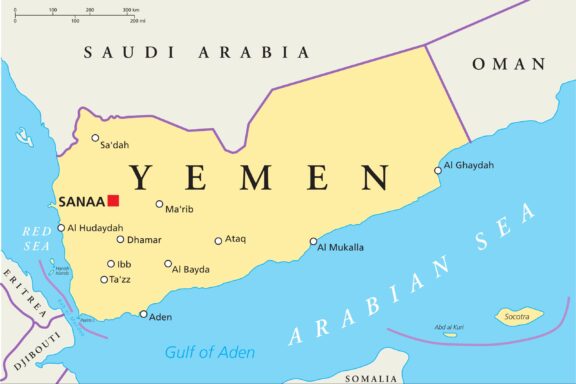
Sana’a is known for its rich cultural heritage, including the old city area, and is a focal point for political and economic activities in Yemen. However, it has faced challenges due to ongoing conflicts.
Where is Sana’a?

Sana’a is located in the western part of Yemen, in a mountainous region at an elevation of approximately 2,300 meters (7,500 feet) above sea level, making it the highest capital in the Middle East.
Geographically, it is positioned at approximately 15.37 °N latitude and 44.21 °E longitude. Within Yemen, it’s situated inland, away from the coastlines that border the Arabian Sea and the Red Sea.
While it is not close to Yemen’s coastal areas, it is a key junction for roads leading to other important cities, such as Aden in the south and Sa’dah in the north. This strategic location has historically made Sana’a a significant hub for trade and communication within Yemen.
History of Sana’a
Sana’a first rose to prominence around the 6th century BCE as part of the ancient Sabaean civilization. It was a major node in a trading route network stretching from Africa to Asia.
Sana’a was not just a trading hub but also a center of knowledge, with scholars visiting to learn about agriculture, astronomy, and medicine. The city’s early prosperity was linked to its ability to manage water through advanced irrigation techniques, a testament to its engineering ingenuity.
After the spread of Islam in the 7th century CE, Sana’a transitioned into a significant religious and educational hub. Islamic dynasties, such as the Umayyads and the Abbasids, ruled the city.
Each brought unique traditions, architecture, and scholarly works, making Sana’a a melting pot of Islamic culture. Religious schools and mosques proliferated, cementing the city’s reputation as a center for Islamic studies.
During the intermittent periods of Ottoman control from the 16th to the 20th centuries, Sana’a underwent substantial changes. The Ottomans focused on modernizing the city and constructing new buildings and fortifications.
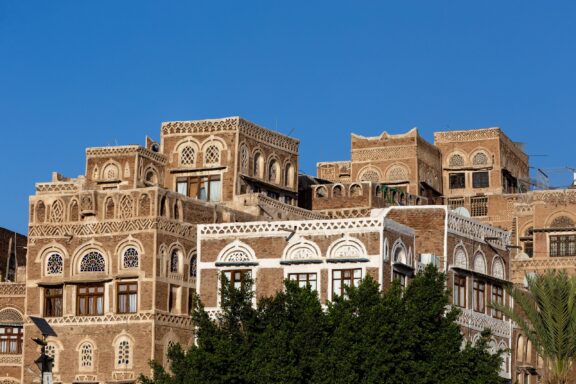
Administrative reforms were introduced, including modernizing the legal system and tax collection. This period saw an integration of Turkish and local Yemeni customs, influencing the city’s architecture and social norms.
In the early 20th century, following the decline of Ottoman influence, Sana’a became the heart of the Mutawakkilite Kingdom of Yemen. The city remained a cultural and religious hub but gained political prominence during this period.
Its institutions were centered around a monarchy, and Islamic law heavily influenced governance. The city continued to attract scholars and merchants from surrounding regions, maintaining its status as a place of importance.
The revolution in 1962 ended the monarchy and led to the formation of the Yemen Arab Republic, with Sana’a as its capital. This change initiated a period of modernization and development in various sectors, including education, infrastructure, and healthcare. Universities and hospitals were built, and the city expanded beyond its historical boundaries.
The city’s recent history is marred by conflict, particularly the civil war that erupted in 2014. Sana’a has been the epicenter of political upheavals, coups, and foreign interventions.
Its historical sites have suffered damage, and its population has faced numerous challenges, from food scarcity to limited access to essential services. Yet, the city’s and its people’s resilience shines through as they navigate these turbulent times.
Features of Sana’a
Sana’a captivates visitors and residents with its rich tapestry of features that weave history, culture, and architecture into an intricate mosaic. The city is home to an array of buildings that are a testament to traditional Yemeni craftsmanship and architecture, preserving techniques and designs passed down through generations.
Adding to the city’s allure are its bustling markets or “souks,” where one can find different items, from spices and textiles to handicrafts. The cacophony of vendors hawking their wares, the aroma of traditional Yemeni dishes, and the colorful displays all contribute to the lively atmosphere.
Geography and Climate

Sana’a is nestled within the Yemeni Highlands, characterized by rugged terrain and mountains. The city is surrounded by hills and valleys, contributing to its elevated position. It lies north of the country’s geographic center, making it relatively accessible from various regions of Yemen.
The geography of Sana’a contributes to its distinct climate. Being at a high elevation, the city experiences a semi-arid climate with relatively mild temperatures compared to other parts of Yemen. The summers are warm but not oppressive, with daytime highs averaging around 25–30 °C (77–86 °F).
Winters are cool and can be quite chilly at night. Precipitation is somewhat scarce, falling mainly during the two wet seasons in March-April and July-August. The limited rainfall makes water a precious resource, impacting the surrounding areas’ daily life and agriculture.
Population

Sana’a is the most populous city in Yemen, home to nearly 3 million people. Its demographic makeup is diverse. The city is home to various ethnic groups, tribes, and communities, each contributing to the rich tapestry of its cultural life.
While Arabic is the primary language, the city’s diversity is reflected in the myriad of dialects and accents one can hear. Sana’a has also been a destination for internal migrants seeking opportunities or safety and a small number of international residents. However, the ongoing conflict has impacted the demographic dynamics.
Economy
The economic landscape of Sana’a is multifaceted. Before the conflict, the city was a bustling hub for trade, services, and government functions. It had diverse economic activities, including retail, hospitality, and manufacturing.
Some of the key industries were textiles, food processing, and construction. As the capital city, Sana’a also housed various governmental and non-governmental organizations employing in the public sector.
However, the ongoing conflict has significantly affected the city’s economy. Basic services have been disrupted, and many businesses have closed or scaled down their operations. Despite these challenges, the city’s economy shows a resilience that reflects the spirit of its people, as informal commerce and local businesses find ways to adapt and survive.
Things to Do and Places to See in Sana’a
Before diving into the top attractions, it’s important to note that Sana’a and Yemen are generally not considered safe for tourists due to ongoing conflict and instability.
Many countries have issued travel advisories strongly discouraging travel to Yemen. It is crucial to consult and adhere to the advice from government travel advisories and consider the significant risks involved.
That said, for the sake of exploring what the city has to offer in a more peaceful time, here are the top five must-see attractions in Sana’a:
1. Old City of Sana’a
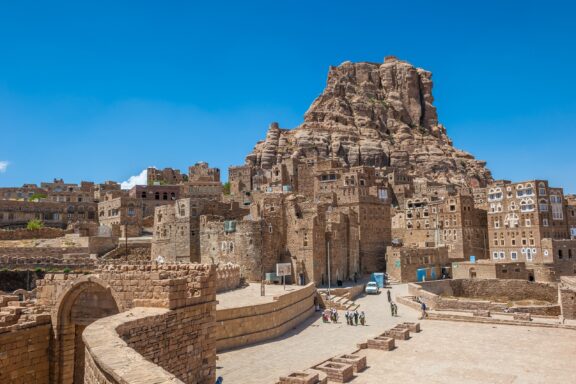
The Old City of Sana’a is an extraordinary destination that transports visitors into a historical tapestry rich with cultural significance. As one of the most well-preserved urban centers in the Arab world, the Old City remains a stronghold of Islamic history, scholarship, and commerce.
Whether you are a history enthusiast, architecture lover, or simply looking to immerse yourself in a distinct culture, the Old City of Sana’a offers an unparalleled experience. Meander through the narrow passageways to explore traditional souks, where you can haggle for local handicrafts or taste authentic Yemeni cuisine.
2. Al-Saleh Mosque
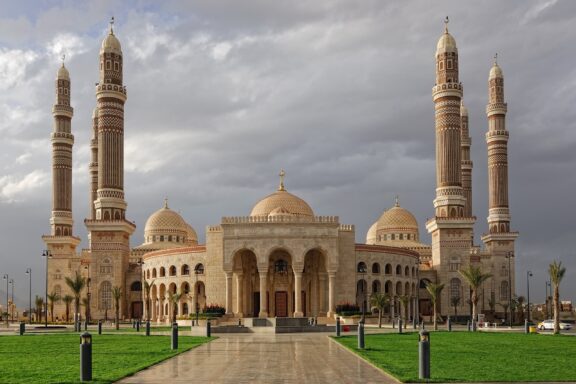
The Al Saleh Mosque symbolizes tradition and modernity, offering a blend of architectural elegance and spiritual tranquility. It’s a must-see landmark that provides insight into contemporary religious practices in Yemen.
This mosque isn’t just a place of worship; it’s a testament to Yemen’s commitment to religious expression and architectural ingenuity. Visitors can join in prayers, explore the mosque’s elaborate details, or simply sit in the gardens to enjoy peace.
3. Bab al-Yemen
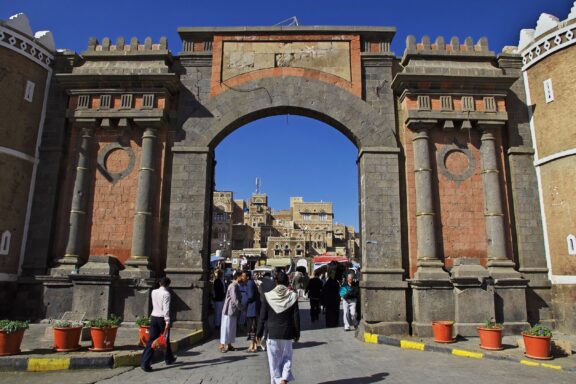
As the gateway to the Old City, Bab al-Yemen is more than just a historical marker; it’s a vibrant entry point to a world that has preserved its traditions for centuries. The imposing stone structure features archways and watchtowers, providing a glimpse into the defensive architecture of the past.
If you’re around the gate, don’t just pass through; take a moment to marvel at the architectural details and consider the countless narratives this gate has been a part of. Street vendors nearby offer local goods, making this an ideal spot for souvenir shopping and snacking on local treats.
4. Dar al-Hajar
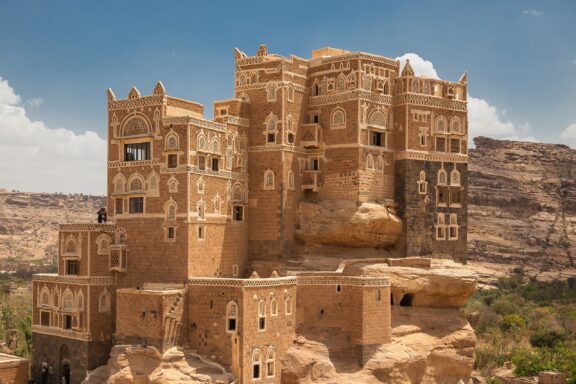
The Dar al-Hajar, or ‘Rock Palace,’ is an architectural marvel that has fascinated tourists and historians alike. Serving originally as a summer residence for Yemeni royalty, it’s an iconic fixture in Yemen’s landscape. This isn’t just a photo-op; Dar al-Hajar is an adventure in architectural exploration.
Whether you’re climbing its stairs for the views or examining the thoughtfully designed rooms, there’s something to capture everyone’s imagination. It’s a unique fusion of natural beauty and human ingenuity, making it a must-visit site for anyone interested in architecture or history.
5. National Museum of Yemen
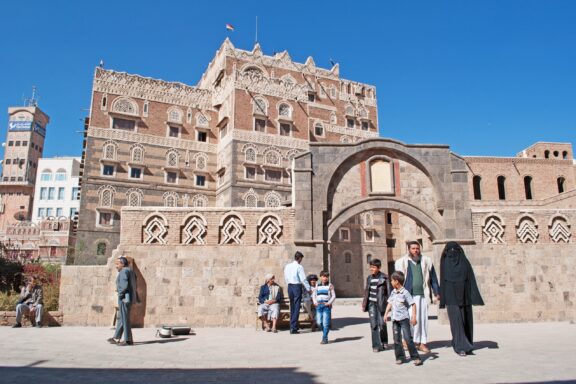
The National Museum of Yemen is a treasure trove of artifacts, art, and historical narratives encapsulating Yemen’s rich past and cultural diversity. The museum consists of multiple galleries devoted to a specific era or theme—from ancient civilizations to modern-day Yemen.
If you want to deepen your understanding of Yemen, its traditions, and its people, the National Museum is a can’t-miss attraction. It offers an educational and enlightening experience suitable for all ages. You can spend hours diving into the intricacies of Yemeni history or enjoy a curated tour of its highlights.
Frequently Asked Questions
Is Sana’a safe for tourists?
Due to ongoing conflicts and civil unrest, Sana’a is not considered safe for tourists. Travel advisories from multiple countries discourage any travel to Yemen at this time.
What is the best time to visit Sana’a?
In a more stable climate, the most comfortable time to visit Sana’a would be during the cooler months of October to April, when temperatures are mild and the weather is more conducive to exploring the city.
What currency is used in Sana’a?
The Yemeni Rial is the currency used in Sana’a. Credit cards are not commonly accepted, so it’s advisable to carry cash, preferably in smaller denominations for ease of transactions.
How do I get around in Sana’a?
In more peaceful times, taxis were the most common way for tourists to get around the city. Public buses are also available but may be inconvenient for travelers unfamiliar with the local language and routes.
Is it easy to find accommodations in Sana’a?
Before the ongoing conflict, Sana’a had various accommodation options, from budget-friendly hotels to more luxurious establishments. However, the current situation has led to the closure or reduction in services of many hotels.
What’s the local cuisine like?
Sana’a offers a rich culinary landscape featuring traditional Yemeni dishes like Saltah, Mandi, and Fahsa. The city’s markets are also a great place to sample local fruits, bread, and sweets.
Is there an airport in Sana’a?
Yes, Sana’a International Airport. However, its operations have been severely impacted by the ongoing conflict.
Can I take photographs in the city?
In more stable times, photography was generally permitted, but it’s always polite to ask for permission, especially when photographing people or private property. Some government buildings and sensitive areas may have restrictions.
These are some of the questions tourists might have when considering a visit to Sana’a, considering that the current situation makes tourism highly inadvisable.
Final Thoughts
Sana’a would offer a captivating blend of ancient history, architectural wonders, and vibrant local culture, making it a unique destination for those interested in stepping off the well-trodden tourist path.
However, travel to Sana’a is highly discouraged, given the current conflict and instability. It’s a city with much to offer, but its full potential as a tourist destination remains unrealized due to ongoing challenges.
Image Sources and Copyright Information
- Map Highlighting the Country of Yemen: © Peter Hermes Furian/Shutterstock
- Location Pin on Sanaa, Yemen Map: © Below the Sky/Shutterstock
- Traditional Yemeni Buildings Against Blue Sky: © MhmdArt/Shutterstock
- Aerial View of Sana’a at Sunset: © javarman/Shutterstock
- Old City of Sana’a, Yemen: © javarman/Shutterstock
- Al Saleh Mosque in Sana’a: © Konevi/Shutterstock
- Bab al-Yemen Gateway with People: © Sergey-73/Shutterstock
- Rock Palace in Yemen: © MhmdArt/Shutterstock